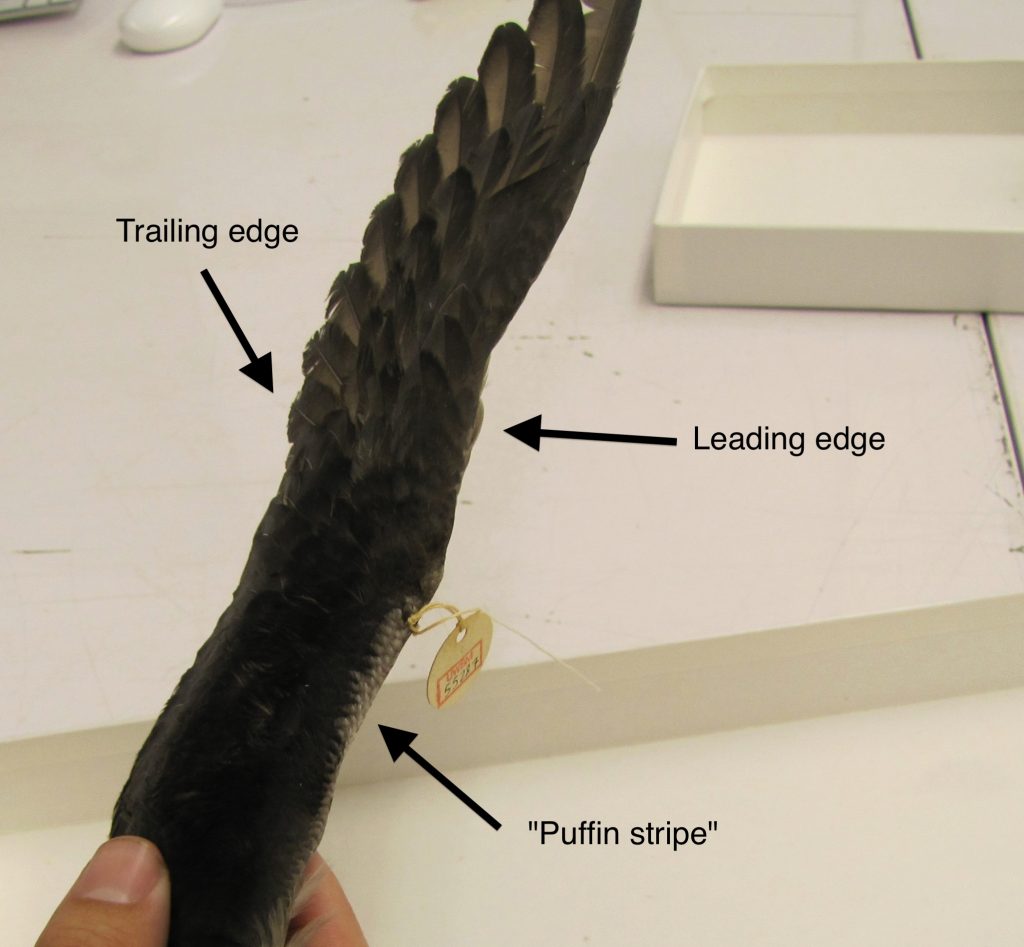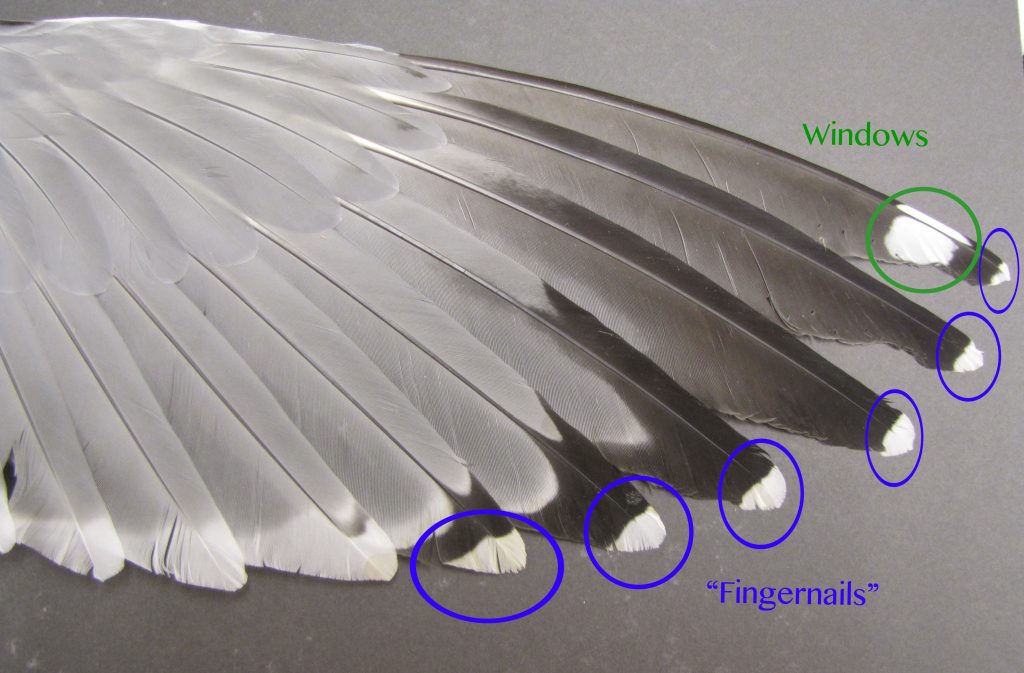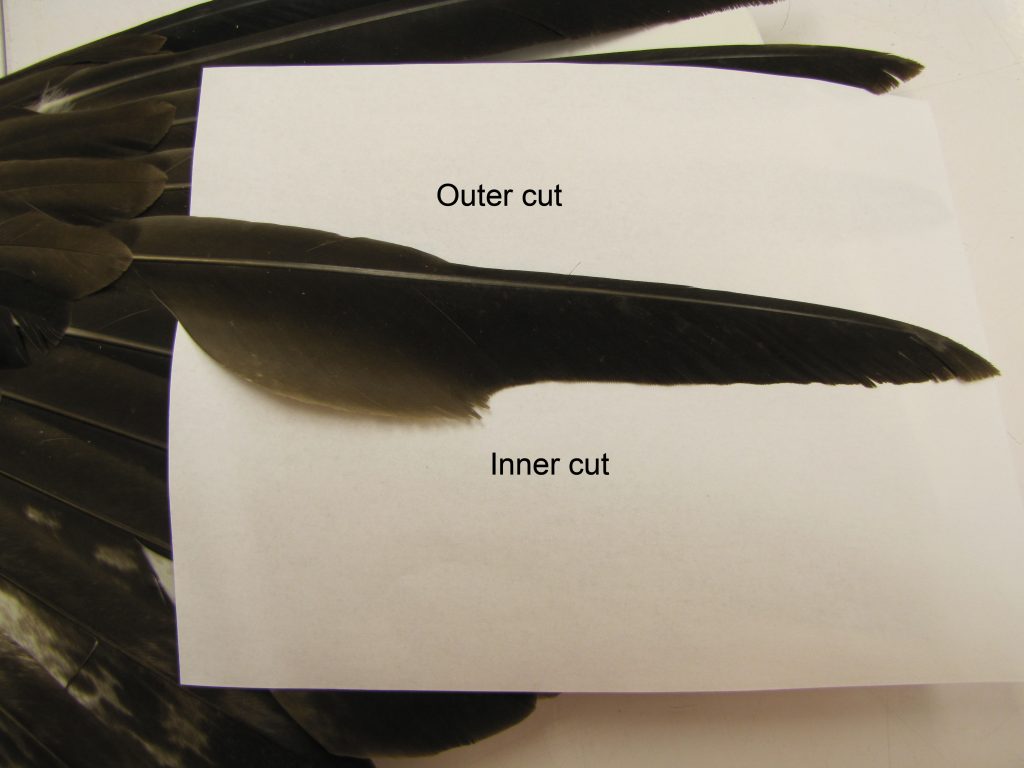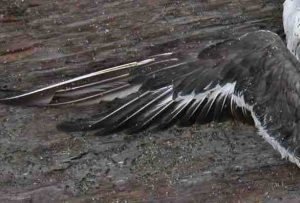One of the challenges of making the COASST Beached Birds Field Guides was avoiding much of the technical jargon found in other scientific resources. So where possible, we prefer “overlapping” to “scutellate” and “four webbed” to “totipalmate.” Those words can be fun to know, but they have no place in a guide for bringing clarity to bird identification.
With bird ID, there are a few terms that are necessary in order to be specific. The glossary in the COASST Field Guide helps with these, but we still field questions about some of the more obscure ones. Here is a closer look at some of the more challenging terms:
Puffin “stripe” or “smudge”
Unique to puffins and the closely related Rhinoceros Auklet, this is the subtly paler coloration on the leading edge of the wing. Sometimes this can look like the feathers are “worn away”, but it’s actually a plumage pattern.

Windows
White spots surrounded by dark, found on the outer wing feathers (primaries) of adult gulls (but not kittiwakes) are referred to as windows.
“Fingernails”
Many gull species have white tips to their primary feathers, which we call “fingernails.”

Speculum
When the secondary feathers are colored differently from the rest of the wing they are referred to as a speculum. Often these are iridescent. This term is commonly applied to ducks, for example this Northern Shoveler wing with a green speculum. Presence and coloration of the speculum can be the key to getting that waterfowl wing down to species.

Wing stripe
This is an area of contrast going through the middle of the wing, with darker or lighter color both before and after. In shorebirds, this is often a white “stripe.” Pigeons show a dark wing stripe.
Inner cut/outer cut primaries
Some birds have oddly shaped edges to their outer primary feathers. The leading edge of the feather may taper gradually towards the tip. This is called an outer cut feather. When the tapering is present on the trailing edge of the feather, it is called inner cut. This can be a good way to tell those cormorant wings from scoter wings!



Is it common for most ducks to have “fingernails”? Or is that only common with a specific duck? Way cool article fyi.
Hi Karen. Thanks for your comment. Usually fingernails are found in gulls. It is common for ducks to have speculums however. Multiple species of ducks have them.